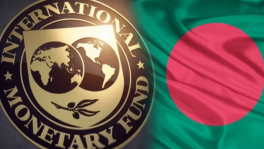David vs Goliath on vaccine development: Are warm vaccines being left behind?
One cannot stop to wonder whether the financial and other incentives for COVID-19 vaccine development override the incentives for global public health benefit. Vaccines indeed have started shaping the new geopolitical order

With the global pandemic still ongoing, claiming millions of lives, and the chronic monopoly of specialised materials only accessible to the handful high-end drug manufacturing corporations, it is time to ask the following question:
Why have certain vaccine technologies that require no specialised sources and have the scope to be mass produced easily, cheaply and quickly not yet been given sufficient attention?
It is also time to rethink and challenge the concepts of "equity" in vaccine production and "equality" for their accessibility to the population, especially if we are to inoculate 7 billion of us in a reasonable and scientific timeframe to save lives and bring this pandemic under control worldwide.
Challenges and categories of Covid 19 vaccine technology
On November 9, 2020, it was announced worldwide that the first effective vaccine was finally on the road for emergency approval to use by the end of the month after unprecedented concentrated efforts to develop it in less than a year.
In these last 6 months, various experts on different platforms and media have provided detailed information regarding all the different types of vaccines; how they are made, how they work and what scientific technologies are used to develop them.
The challenges with the majority of vaccines are multiple, ranging from scalability issues to storage requirements. The most common logistical challenge especially for Low and Middle-Income countries (LMICs) is the need for the vaccine to be kept frozen during manufacture, transport and storage.
Manufacturing vaccines rapidly also involve several other challenges, adding significantly to the cost and timescales such as, efficacy trials, constructing or access to manufacturing facilities, supply chains, the fill and finish stage, and quality control.
Another crucially complex challenge is the knowledge and skills of people required around the whole process for a vaccine's manufacture. Although there are discussions on accessing and sharing the proprietary knowledge needed for vaccine production, this is only one aspect of knowledge sharing.
WHO established the Covid-19 Technology Access Pool (C-TAP) to facilitate the sharing of knowledge, data and intellectual property globally but disappointingly yet, no manufacturers of leading vaccine candidates have engaged with C-TAP, and the World Trade Organisation reform proposal has not gained traction.
The availability of one-dose vaccines that can be kept refrigerated or at room temperature would greatly simplify the logistical and administrative challenges associated with Covid-19 vaccination programmes.
The other aspect of knowledge sharing, which is not a quick fix solution and a huge bottleneck in the vaccine development and production process globally, is the highly technical cutting-edge laboratory skills that are only learned hands on and practiced over years.
This vital aspect has been recently highlighted and recognised by the UK Vaccine Task Force (VTF) in their December 2020 report, they have set as a strategy for action for 2021 and beyond to provide funding for critical skills training, both online as well as physical training to bring people into advanced manufacturing in the UK.
Have warm vaccines been left behind and why does it matter to talk about equitable and equality funding in vaccine development?
The developed world with the rich nations at the forefront and its global external funders has been quick to act for providing and offering extensive and vast financial support to the few big names of pharmaceutical giants who promised to develop and deliver vaccines to the globe. But, the technologies of those promised vaccines not only seem to be time consuming, but also extremely difficult to scale up at manufacturing point.
In addition, they require the most expensive and complex tools including transportation and logistics. However, support, if at all, towards smaller and equally credible biotech companies and scientists has been too slow.
The availability of one-dose vaccines that can be kept refrigerated or at room temperature would greatly simplify the logistical and administrative challenges associated with Covid-19 vaccination programmes.
In order to have equity and equality for vaccine access to each and every global citizen, we must start with equity and equality in relation to two main criteria.
First, access to funds and investment on vaccine technologies explored by smaller eligible and credible pharmaceuticals and laboratories, preferably public for low and middle income countries. Such technology includes the warm vaccine or protein-based vaccines that can be kept at room temperature.

Secondly, developing highly skilled human resources including scientific expertise for strengthening capacity building in health. We cannot talk about global preparedness and global solidarity when we do not have the commitment to pursue global equity in both infrastructure and specialised human skills/workforce that can ensure development, sustainability and equality for all.
As of the end of 2020, the total global pharmaceutical market was valued at about 1.27 trillion US dollars. This is a significant increase from 2001 when the market was valued at just 390 billion US dollars. The pharmaceutical market plays a key role in how people get medications and what people pay for medication.
It is of no surprise therefore that the global Covid-19 vaccine war focused around patents, licences, agreements, commercial rights and disputes. Closed up deals with governments and major pharmaceuticals have become a barrier to smaller promising drug manufacturers for funding access; thus there is a lot of profiteering at stake.
How can we maintain the global balance of power in vaccine development, manufacturing and accessibility to all?
One cannot stop to wonder whether the financial and other incentives for Covid-19 vaccine development override the incentives for global public health benefit. Vaccines indeed have started shaping the new geopolitical order. Vaccine aid has become the new form of foreign aid strategy used for pressing and/or exploiting other interests.
Although the World Bank (WB) has so far lent $500 million to Bangladesh for buying vaccines and Asian Development Bank (ADB) will have lent $940 million by end of May 2021, it is not known what the terms and conditions are of such vast loans.
With 85% of the global population falling under the LMICs, the divide between developing world and developed world in vaccine inequality and inequity has widened even further. This leaves poor people across the world suffering from the consequences in every sphere of their life.
Developed nations not only have had the advantage so far to pre-order vaccines but have also stockpiled 3 times more of what is required to inoculate their populations. To make matters worse, significant ambiguity has also taken place on wasting doses from vials containing the vaccine's active ingredients prior to administering them.
While discussions are ongoing in some of the richest nations in finalising the plans to offer their citizens a third vaccine dose by autumn 2021, there is a growing outcry in developing countries and in WHO over the scarcity of vaccines in poor countries. Especially as experts have repeatedly suggested that herd immunity to Covid-19 will only be achieved when approximately 60% of the population is immune, either through naturally acquired immunity after infection, or a vaccination.
Despite the launch of the COVAX scheme, predominantly as a Covid-19 global vaccine assess point coordinated by GAVI, the vaccine Alliance, the Coalition for Epidemic Preparedness Innovations (CEPI) and the WHO, this initiative has proven to be inadequate in ensuring fair vaccine allocation towards the LMICs given the scale of the crisis and due to its non-binding nature towards High Income Countries (HICs).
Inevitably COVAX is shifting its focus now in helping countries procure doses at lower prices and thus launch their vaccination campaigns earlier than they would without external assistance.
In order to maintain a global balance of power, it seems logical to move vaccine production and manufacturing into local contexts. However, the greatest barrier in doing this lies with the lack of skilled human resources which significantly limits effective knowledge sharing.
Financial resources and time are required for human resource development of basic science and high-end skilled workforce which will strengthen capacity building and effectiveness of knowledge sharing, therefore contributing to the manufacture of vaccines.
This problem of a lack of attention in scaling up skilled human resources across the globe, though it is not something new. It is important to question why the pool of talents and expertise in biomanufacturing and in vaccine production has been concentrated in very few countries.
It is widely known that the training these companies provide does not extend beyond "button pressing" and giving instructions through manuals, which usually is provided after the service providers and governments have purchased their multi million worth of equipment.
As this trend is growing, so is a new type of power, dependency and control of the giants over nations and billions of people. Real positive change to benefit all can take place only when a combination of skills, infrastructure, knowledge, financial assistance and mechanisms for strengthening nations' local governance structures are based mutually on trust, reciprocity and genuine partnership between rich and poor nations and aligned to the agenda of their local context.
A still developing country like Bangladesh for example, requires financial assistance if it is to continue the roadmap to develop its self-sufficiency with long term sustainability. However, the expectation that financial assistance will alleviate the major problems associated with the pandemic including buying on behalf of Bangladesh vaccines is a false one. This in fact creates and deepens further dependence and control to HICs, their institutions and organisations as well as the foreign companies who are strengthened through their involvement in activities such as foreign assistance programmes and loans.
What next now?
There is uncertainty and lack of sufficient evidence due to the very little time we had to evaluate the vaccination programmes through research since inoculation started. This means that there are still vital unanswered questions that will determine long term Covid-19 national and global vaccination policies and strategies.
Clear and robust information is needed on whether 1 dose or 2 doses or booster doses are the best way forward for the ongoing protection of the continuously emerging variants of the virus. These questions must be answered if we are to prevent severity of the disease and keep mortality rates down.
In order to look forward to the future of the global management of Covid-19 pandemic, we must act now the following:
- Public transparency on how and where the funding allocated by global funding bodies is spent on and by who.
- Financial support for the development and manufacture of vaccines at national level in LMICs that are suitable to the local context.
- Investing time and resources in vaccine technologies that are feasible to overcome the barriers of scalability such as warm vaccines.
- Building capacity on training of highly skilled workforce alongside knowledge and expertise sharing.
If the people of the world are to acclaim a "vaccine hero", then this hero must bear the characteristics for working for all humanity. Until then, the battle between David and Goliath on vaccine development will carry on.
Athina Bogdani Das is a health and social scientist at Sheffield in UK


 Keep updated, follow The Business Standard's Google news channel
Keep updated, follow The Business Standard's Google news channel















